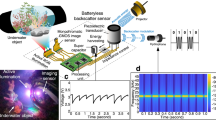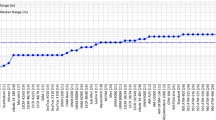Abstract
Coverage in an underwater acoustic sensor network is directly related to successful sensing and communication among battery-powered nodes with strictly limited lifetime. It is impractical to change or recharge batteries in most of the underwater applications. Moreover, major power consumption of the sensor nodes occur during acoustic transmission. In this regard, acoustic backscatter networking emerges as a promising communication technique, where nodes transmit data by modulating and reflecting a fraction of an incident carrier signal from an acoustic source, which removes the lifetime limitation due to depletion of batteries. In this study, we introduce and analyze the feasibility of Underwater Acoustic Backscatter Networks (UABN). We derive equations for the rectified voltage and harvested power at a UABN node. We investigate the communication range by calculating the maximum distance at which UABN nodes can be powered using practical transducer assumptions and viable transmission power levels. Communication coverage, which is a measure of successful data collection from all nodes in the event field, determines the performance of UABN. We analytically study interference-free source deployment for UABN coverage in terms of source power, range, transmission frequency, network size, and node characteristics. Numerical examples demonstrate that UABN operation is realizable with a feasible number of sources. An event field of size 0.04 km\(^2\) can be covered with a single directional source transmitting with 1000 W at 5 kHz. As long as the transmission frequency does not exceed 100 kHz, only 5 sources are sufficient for interference-free coverage using transmission power levels below 500 W.
Graphical Abstract














Similar content being viewed by others
References
Akyildiz IF, Pompili D, Melodia T (2005) Underwater acoustic sensor networks: Research challenges. Ad Hoc Netw 3(3):257–279. https://doi.org/10.1016/j.adhoc.2005.01.004
Heidemann J, Stojanovic M, Zorzi M (2012) Underwater sensor networks: Applications, advances and challenges. Philosophical Transactions of the Royal Society of London A: Mathematical, Physical and Engineering Sciences 370(1958):158–175. https://doi.org/10.1098/rsta.2011.0214
Ali M, Jayakody DNK, Chursin YA et al (2020) Recent advances and future directions on underwater wireless communications. Arch Comput Meth Eng 27:1379–1412. https://doi.org/10.1007/s11831-019-09354-8
Boukerche A, Sun P (2020) Design of algorithms and protocols for underwater acoustic wireless sensor networks. ACM Comput Surv (CSUR) 53(6):1–34. https://dl.acm.org/doi/10.1145/3421763
Caiti A, Crisostomi E, Munafo A (2009) Physical characterization of acoustic communication channel properties in underwater mobile sensor networks. In: Hailes S, Sicari S, Roussos G (eds) Sensor Systems and Software. S-CUBE 2009. Lecture Notes of the Institute for Computer Sciences, Social Informatics and Telecommunications Engineering, vol 24. Springer, Berlin, Heidelberg. https://doi.org/10.1007/978-3-642-11528-8_9
Nayyar A, Puri V, Le DN (2019) Comprehensive Analysis of Routing Protocols Surrounding Underwater Sensor Networks (UWSNs). In: Balas V, Sharma N, Chakrabarti A (eds) Data Management, Analytics and Innovation. Advances in Intelligent Systems and Computing, vol 808. Springer, Singapore. https://doi.org/10.1007/978-981-13-1402-5_33
Nayyar A, Balas VE (2019) Analysis of Simulation Tools for Underwater Sensor Networks (UWSNs). In: Bhattacharyya S, Hassanien A, Gupta D, Khanna A, Pan I (eds) International Conference on Innovative Computing and Communications. Lecture Notes in Networks and Systems, vol 55. Springer, Singapore. https://doi.org/10.1007/978-981-13-2324-9_17
Pompili D, Akyildiz IF (2009) Overview of networking protocols for underwater wireless communications. IEEE Commun Mag 47(1):97–102. https://doi.org/10.1109/MCOM.2009.4752684
Goyal N, Dave M, Verma AK (2019) Protocol stack of underwater wireless sensor network: classical approaches and new trends. Wireless Pers Commun 104:995–1022. https://doi.org/10.1007/s11277-018-6064-z
Bereketli A, Bilgen S (2012) Remotely powered underwater acoustic sensor networks. IEEE Sens J 12(12):3467–3472. https://doi.org/10.1109/JSEN.2012.2210401
Bereketli A, Turken H, Bilgen S (2013) Cross layer power adaptive CSMA/CA for sink powered underwater acoustic sensor networks. In: 12th Annual Mediterranean Ad Hoc Networking Workshop (MED-HOC-NET), Ajaccio, France, 26–33. https://doi.org/10.1109/MedHocNet.2013.6767406
Khan A et al (2019) Energy harvesting based routing protocol for underwater sensor networks. PLoS One 14(7). https://doi.org/10.1371/journal.pone.0219459
Guida R et al (2020) Underwater ultrasonic wireless power transfer: A battery-less platform for the internet of underwater things. IEEE Trans Mob Comput. https://doi.org/10.1109/TMC.2020.3029679
Guida R et al (2018) An acoustically powered battery-less internet of underwater things platform. In: Fourth Underwater Communications and Networking Conference (UComms ’18), Lerici, Italy, 1–5. https://doi.org/10.1109/UComms.2018.8493229
Erdem HE, Yildiz HU, Gungor VC (2019) On the lifetime of compressive sensing based energy harvesting in underwater sensor networks. IEEE Sens J 19(12):4680–4687. https://doi.org/10.1109/JSEN.2019.2900427
Erdem HE, Gungor VC (2020) Analyzing lifetime of energy harvesting underwater wireless sensor nodes. Int J Commun Syst 33(3). https://doi.org/10.1002/dac.4214
Basagni S et al (2018) Harnessing HyDRO: Harvesting-aware data routing for underwater wireless sensor networks. In: Eighteenth ACM International Symposium on Mobile Ad Hoc Networking and Computing (Mobihoc ’18), Los Angeles, CA, USA, 271–279. https://doi.org/10.1145/3209582.3209610
Song K, Ji B, Li C (2019) Resource allocation for relay-aided underwater acoustic sensor networks with energy harvesting. Physical Communication 33(12):241–248. https://doi.org/10.1016/j.phycom.2019.01.006
Han M et al (2020) Enabling sustainable underwater IoT networks with energy harvesting: A decentralized reinforcement learning approach. IEEE Internet of Things Journal 7(10):9953–9964. https://doi.org/10.1109/JIOT.2020.2990733
Jang J, Adib F (2019) Underwater backscatter networking. In: ACM Special Interest Group on Data Communication (SIGCOMM’19), New York, NY, USA, 187–199. https://doi.org/10.1145/3341302.3342091
Afzal, S. S.: Battery-free subsea internet of things. XRDS, 27(2), 62–65 (2020). doi: 10.1145/3436203
Ghaffarivardavagh R et al (2020) Ultra-wideband underwater backscatter via piezoelectric metamaterials. In: Annual conference of the ACM Special Interest Group on Data Communication on the applications, technologies, architectures, and protocols for computer communication (SIGCOMM’20), New York, NY, USA, 722–734. https://doi.org/10.1145/3387514.3405898
Afzal SS et al (2020) Enabling higher-order modulation for underwater backscatter communication. In: Global Oceans, Singapore – U.S. Gulf Coast, 1–6. https://doi.org/10.1109/IEEECONF38699.2020.9389061
Ghaffarivardavagh R et al (2020) Underwater backscatter localization: Toward a battery-free underwater GPS. In: 19th ACM Workshop on Hot Topics in Networks (HotNets ’20), New York, NY, USA, 125–131. https://doi.org/10.1145/3422604.3425950
Hu G et al (2021) Sparse reconstruction based channel estimation for underwater piezo-acoustic backscatter systems. In: IEEE 93rd Vehicular Technology Conference (VTC2021-Spring), Helsinki, Finland, 1–5. https://doi.org/10.1109/VTC2021-Spring51267.2021.9449012
Sherman CH, Butler JL (2007) Electroacoustic transduction. In: Goodman RR, Bucker HP, Dyer I, Simmen JA (eds.) Transducers and Arrays for Underwater Sound, pp. 31–75. Springer. https://doi.org/10.1007/978-0-387-33139-3
Stojanovic M (2007) On the relationship between capacity and distance in an underwater acoustic communication channel. ACM SIGMOBILE Mobile Computing and Communications Review 11(4):34–43. https://doi.org/10.1145/1347364.1347373
Fisher FH, Simmons VP (1977) Sound absorption in sea water. J Acoust Soc Am 62(3):558–564. https://doi.org/10.1121/1.381574
Kurt P et al (2019) Vibro-acoustic design, manufacturing and characterization of a tonpilz-type transducer. Appl Acoust 150:27–35. https://doi.org/10.1016/j.apacoust.2019.02.003
Ottman GK et al (2002) Adaptive piezoelectric energy harvesting circuit for wireless remote power supply. IEEE Trans Power Electron 17(5):669–676. https://doi.org/10.1109/TPEL.2002.802194
Tabesh A, Frechette LG (2010) A low-power stand-alone adaptive circuit for harvesting energy from a piezoelectric micropower generator. IEEE Transactions on Industrial Electronics, 57(3), 840–849. https://doi.org/10.1109/TIE.2009.2037648
Katsnelson B, Petnikov V, Lynch J (2012) Models and statistics of intensity fluctuations. In: Simmen JA, Bucker HP, Dyer I, Jensen FB, Livingston ES (eds.) Fundamentals of Shallow Water Acoustics, pp. 230–237. Springer. https://doi.org/10.1007/978-1-4419-9777-7
Emokpae LE, Younis M (2012) Throughput analysis for shallow water communication utilizing directional antennas. IEEE J Sel Areas Commun 30(5):1006–1018. https://doi.org/10.1109/JSAC.2012.120615
Massa TR-1075 Transducers. Massa Products Corp. http://www.massa.com/industrial/oceanographic. Accessed 30 Nov 2021
Urick RJ (1983) Properties of transducer arrays: Directivity index. In: D. Heiberg, J. Davis (eds.) Principles of Underwater Sound, pp. 31–70. McGraw-Hill
Han X et al (2008) Deploying directional sensor networks with guaranteed connectivity and coverage. In: 5th Annual IEEE Communications Society Conference on Sensor, Mesh and Ad Hoc Communications and Networks, San Francisco, CA, USA, 153–160. https://doi.org/10.1109/SAHCN.2008.28
Kuperberg W (1989) Covering the plane with congruent copies of a convex body. Bull Lond Math Soc 21(1):82–86. https://doi.org/10.1112/blms/21.1.82
Wu W et al (2020) Coverage with connectivity. In: Pardalos PM, Thai MT (eds.) Optimal Coverage in Wireless Sensor Networks, pp. 154–155. Springer. https://doi.org/10.1007/978-3-030-52824-9_9
Acknowledgements
Authors are thankful to the anonymous reviewers, the editor-in-chief Prof. Xuemin Shen, and Ms. Nuray Özer Bereketli from the Department of Electrical and Electronics Engineering at Middle East Technical University, Ankara, Turkey, for their valuable recommendations to improve the quality, correctness, presentation and readability of the manuscript.
Author information
Authors and Affiliations
Corresponding author
Ethics declarations
Conflicts of interest
The authors declare that they have no conflict of interest.
Appendix
Appendix
To facilitate the readability of the figures, tables of data values for each figure are given in this section (see Tables 4, 5, 6, 7, 8, 9, 10, 11, and 12).
Rights and permissions
About this article
Cite this article
Bereketli, A. Interference-Free Source Deployment for Coverage in Underwater Acoustic Backscatter Networks. Peer-to-Peer Netw. Appl. 15, 1577–1594 (2022). https://doi.org/10.1007/s12083-022-01312-9
Received:
Accepted:
Published:
Issue Date:
DOI: https://doi.org/10.1007/s12083-022-01312-9




